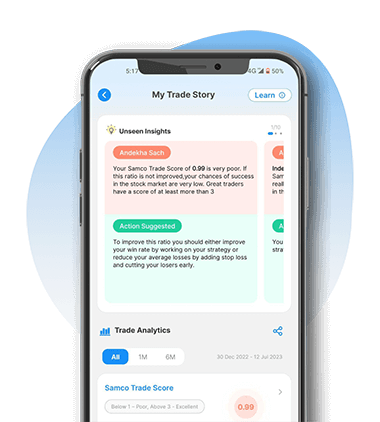In this article, we will discuss:
- What Are Strategy Legs?
- What Will Be The Payoff?
- Who Can Deploy This Strategy?
- When Should This Strategy Be Deployed?
- Understanding Strategy Greeks
- Things To Keep In Mind
A protective put strategy is a type of option strategy that allows you to profit from a bullish view on a stock while limiting your downside risk.
What Are Strategy Legs?
A protective put strategy consists of two legs: a long position in the underlying stock and a long position in an out of the money put option on the same stock. A long position means that you own or buy the asset, while an out of the money option means that the option has a strike price lower than the current market price of the stock.
The quantity of the stock and the option should be equal, meaning that you buy one put option for every share of stock you own. This way, you create a 1:1 hedge that protects your stock position from a price decline.
If you do not own or cannot buy the underlying stock, you can use a futures contract instead. A futures contract is an agreement to buy or sell an asset at a specified price and date in the future. You can buy one futures contract of the underlying stock and one put option with the same strike price and expiration date.
What Will Be The Payoff?
The payoff of a protective put strategy depends on the price of the underlying stock at the expiration date of the option. The payoff can be calculated as follows:
- If the stock price is above the strike price of the option, the option will expire worthless and you will only profit from the increase in the stock price. Your profit will be equal to the difference between the stock price and the futures price, minus the premium paid for the option.
- If the stock price is below the strike price of the option, the option will be in the money and you will exercise it to sell the stock at the strike price. Your loss will be limited to the difference between the futures price and the strike price, plus the premium paid for the option.
Your maximum loss will be limited to the premium paid for the option plus the difference between the futures price and the strike price of the option. Your breakeven point will be the futures price plus the premium paid for the option. You will start earning profit as the stock price moves above the breakeven point. As the price increases from the breakeven point, your profits will increase and your profit can theoretically be unlimited.
Who Can Deploy This Strategy?
This strategy can be deployed by veterans with moderate risk appetite. Veterans are experienced traders who have a good understanding of the market and the option pricing. Moderate risk appetite means that you are willing to take some risk but not too much. You are bullish on the stock but you also want to hedge yourself from any downside risk.
When Should This Strategy Be Deployed?
This strategy should be deployed when you are very bullish on the underlying stock but you also want to hedge yourself from any downside risk. This could be the case when you expect the stock to rise significantly in the near future due to some positive news, earnings, or events, but you also want to protect yourself from any unexpected negative events that could cause the stock to drop.
Understanding Strategy Greeks
Strategy Greeks are measures of how the option price changes with respect to various factors, such as the stock price, the time to expiration, the volatility, the interest rate, and the dividend. The most important Greeks for a protective put strategy are delta and theta.
Delta measures the sensitivity of the option price to the change in the stock price. It ranges from -1 to 1. A positive delta means that the option price increases as the stock price increases, while a negative delta means that the option price decreases as the stock price decreases. For a protective put strategy, the delta of the futures contract is 1, while the delta of the put option is negative and decreases as the stock price increases. The net delta of the strategy is positive and increases as the stock price increases. This means that the strategy benefits from a rise in the stock price.
Theta measures the sensitivity of the option price to the change in the time to expiration. It is always negative, meaning that the option price decreases as the time to expiration decreases. For a protective put strategy, the theta of the futures contract is zero, while the theta of the put option is negative and increases as the time to expiration decreases. The net theta of the strategy is negative and increases as the time to expiration decreases. This means that the strategy suffers from a decline in the time to expiration.
Things To Keep In Mind
The strike price at which the put option needs to be bought should be decided on your confidence level on the bullishness of the stock. If you are very confident with your bullish bias, you may buy a deep out of the money put option, which has a lower premium but also a lower protection. This will increase your maximum possible loss but also your potential profit. If you want to play it safe with a bullish view, you may buy an out of the money put option that is not far from the futures price, which has a higher premium but also a higher protection. This will reduce your maximum possible loss but also your potential profit.
Another thing to keep in mind is the volatility of the stock. Volatility measures the degree of variation in the stock price over time. A higher volatility means that the stock price fluctuates more, while a lower volatility means that the stock price is more stable. Volatility affects the option price, as a higher volatility increases the option premium and vice versa. For a protective put strategy, a higher volatility means that you pay more for the option but also get more protection. A lower volatility means that you pay less for the option but also get less protection. If you want to use protective strategy you can also use Options B.R.O. It is a feature in the Samco trading app that helps you select the best options trading strategy based on your market view, risk appetite, and return expectations. It also provides you with the optimal strike prices, expiry dates, and quantities for your chosen strategy.
Disclaimer: INVESTMENT IN SECURITIES MARKET ARE SUBJECT TO MARKET RISKS, READ ALL THE RELATED DOCUMENTS CAREFULLY BEFORE INVESTING. The asset classes and securities quoted in the film are exemplary and are not recommendatory. SAMCO Securities Limited (Formerly known as Samruddhi Stock Brokers Limited): BSE: 935 | NSE: 12135 | MSEI- 31600 | SEBI Reg. No.: INZ000002535 | AMFI Reg. No. 120121 | Depository Participant: CDSL: IN-DP-CDSL-443-2008 CIN No.: U67120MH2004PLC146183 | SAMCO Commodities Limited (Formerly known as Samruddhi Tradecom India Limited) | MCX- 55190 | SEBI Reg. No.: INZ000013932 Registered Address: Samco Securities Limited, 1004 - A, 10th Floor, Naman Midtown - A Wing, Senapati Bapat Marg, Prabhadevi, Mumbai - 400 013, Maharashtra, India. For any complaints Email - grievances@samco.in Research Analysts -SEBI Reg.No.-INHO0O0005847.







Leave A Comment?